LiveO2 Extreme is a training and recovery system that uses the power of oxygen to help you optimize your health, recover quicker from respiratory ailments, boost your immune system, slow down aging and improve your cardiovascular performance.
In other words, LiveO2 enables you to exercise under high-altitude conditions (up to 22,000 feet) and to switch back and forth between inhaling hypoxic air (with as low as 10% oxygen) and hyperoxic air (with up to 90% oxygen), a concept known as intermittent hypoxic training (IHT).
While IHT equipment is typically only available in clinical settings, LiveO2 brings that capability into your home or fitness studio.
I’ve been using LiveO2 Extreme in combination with CAROL (my AI-powered exercise bike) to improve my cardiovascular performance, fight off a pesky respiratory infection and increase the number of red blood cells in my bloodstream.
In this review, I’ll tell you everything you need to know about my experience with LiveO2, how I’ve been incorporating intermittent hypoxic training into my exercise regimen, and how my aerobic performance and oxygen-related blood markers have changed as a result of using the device.
LiveO2 Extreme
Summary
LiveO2 Extreme is a training and recovery system that uses the power of oxygen to help you optimize your health, recover quicker from respiratory ailments, boost your immune system, slow down aging and improve your cardiovascular performance.
Pros
- Highly effective for a wide variety of use cases.
- Fairly easy to use.
- Requires little to no maintenance.
- Offers several oxygen/altitude settings to accommodate a wide spectrum of fitness levels.
Cons
- High initial investment.
- Takes up floor space.
- Requires separate exercise equipment (e.g., a bike or treadmill).
Benefits of Using LiveO2 (Why I Use It)
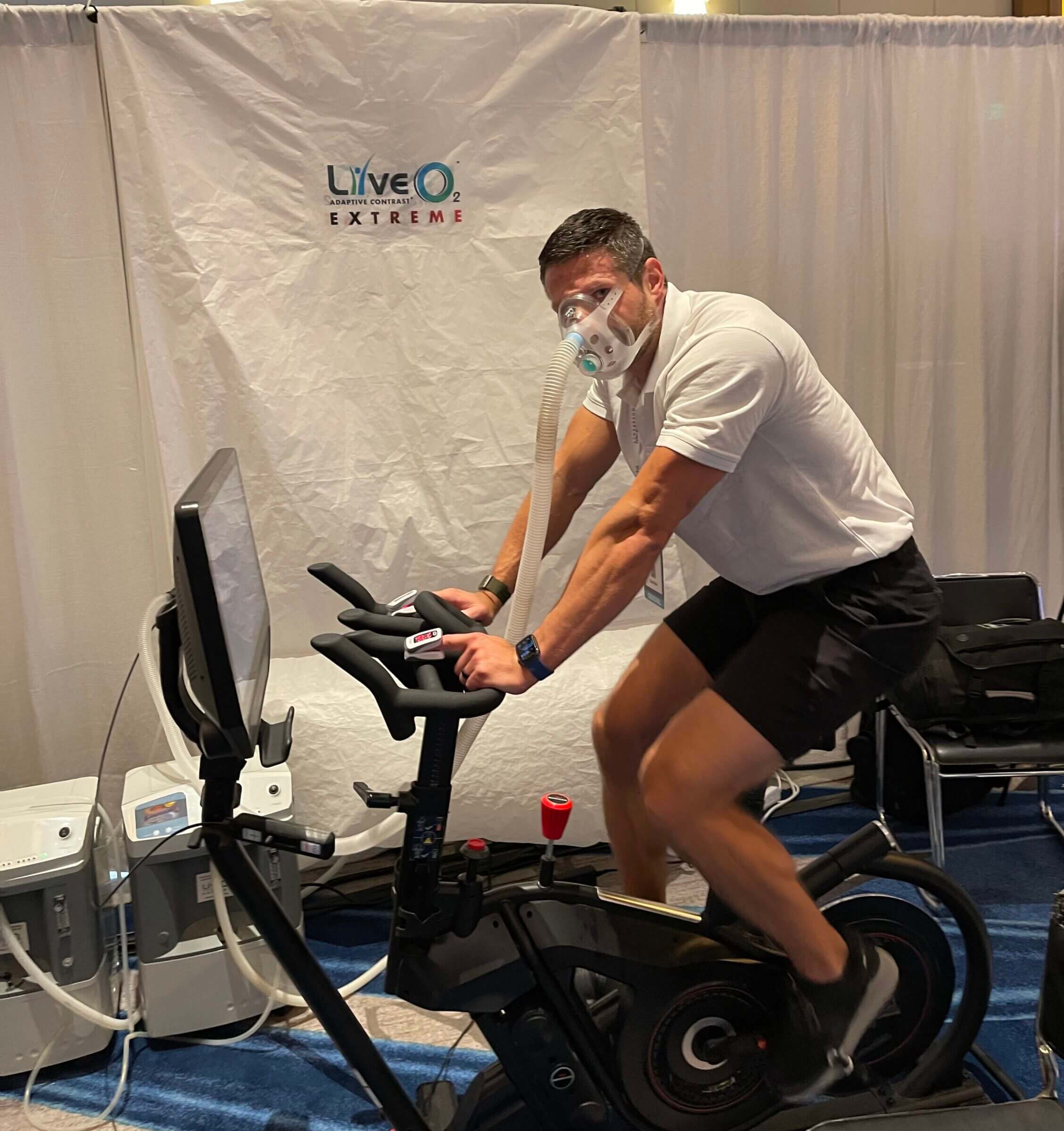
The LiveO2 system was developed to better prepare serious mountain climbers for the low-oxygen conditions they encounter at high altitude, for professional athletes to improve the effects of their training regimen, and to support the recovery efforts of those who have suffered brain injury or who are battling addiction.
I don’t fall into any of those categories. I should also mention that I knew nothing about intermittent hypoxic training when I did my first ride on a LiveO2 system at a biohacking conference in Orlando in the summer of 2021. But the short workout I did that day sucked the life out of me, and that was reason enough for me to get my own system to see if I could get used to intense exercise under low-oxygen conditions.
As I started training with LiveO2, I took a deep dive into the available scientific research behind oxygen therapy and concluded that many of its benefits would also be applicable to my wellness regimen.
You can learn more about the benefits of altitude training and the scientific rationale behind them in this article, but this list below is an overview of the top 10. I’ve bolded the ones I was particularly interested in exploring when I began using the LiveO2 Extreme system.
- Boosts the immune system.
- Flushes metabolic waste out of tissue (detoxification) to promote healing.
- Helps treat chronic fatigue and brain fog.
- Increases red blood cell count.
- Improves endurance performance and muscle recovery.
- Increases oxygenated blood flow to the brain and other organs.
- Reduces alcohol withdrawal stress.
- Slows down cognitive decline in patients with Alzheimer’s and other brain disorders.
- Speeds up recovery after respiratory infections.
- Triggers the creation of new blood vessels.
In a nutshell, temporarily breathing less-than-normal levels of oxygen has several benefits. For example, hypoxia causes the dilation of systemic blood vessels, which pushes oxygen-rich blood into the areas of the body that would normally experience reduced blood flow.
Hypoxia also makes the mitochondria in each cell more efficient at utilizing oxygen, and it increases your CO2 tolerance (the body’s ability to absorb oxygen). The latter is crucial for the cells to produce optimal amounts of energy even during low-oxygen conditions, such as climbing at altitude or enduring an intense workout.
It’s worth noting that there are several methods for improving CO2 tolerance, including simple breathing exercises, as well as nasal breathing and mouth taping. I’ve tried them all, and have found intermittent hypoxic training to be the most effective by far.
But I’m not a professional athlete, and exercise performance isn’t my highest priority — just a welcome side effect. My primary goal with most of the biohacks I experiment with is to improve my overall health and well-being, as well as to slow down the natural process of aging.
LiveO2 Extreme and its underlying training methodology — the company calls it Adaptive Contrast — has been an effective tool to accomplish that.
Specifically, I’ve noticeably improved my exercise performance, increased my lactate threshold, upregulated my immune system and increased my body’s oxygen-carrying capabilities as proven by an increase in my red blood cell count, hemoglobin and hematocrit.
The last of those constitutes legal blood doping, and it’s the reason why many Olympic athletes train at altitude, live and sleep at altitude, and/or use technology such as that offered by LiveO2.
LiveO2 Extreme Review

I’ve been training with LiveO2 Extreme, the company’s top-of-the-line model, because it allows me to simulate oxygen levels you would normally only encounter at 22,000 feet above sea level — or at the Base Camp of Mount Everest.
However, LiveO2 offers several other (less expensive) systems that might be a better fit for you, depending on your requirements and goals. You can scroll down for a brief side-by-side comparison of the various altitude simulation systems the company offers.
Hardware and Setup
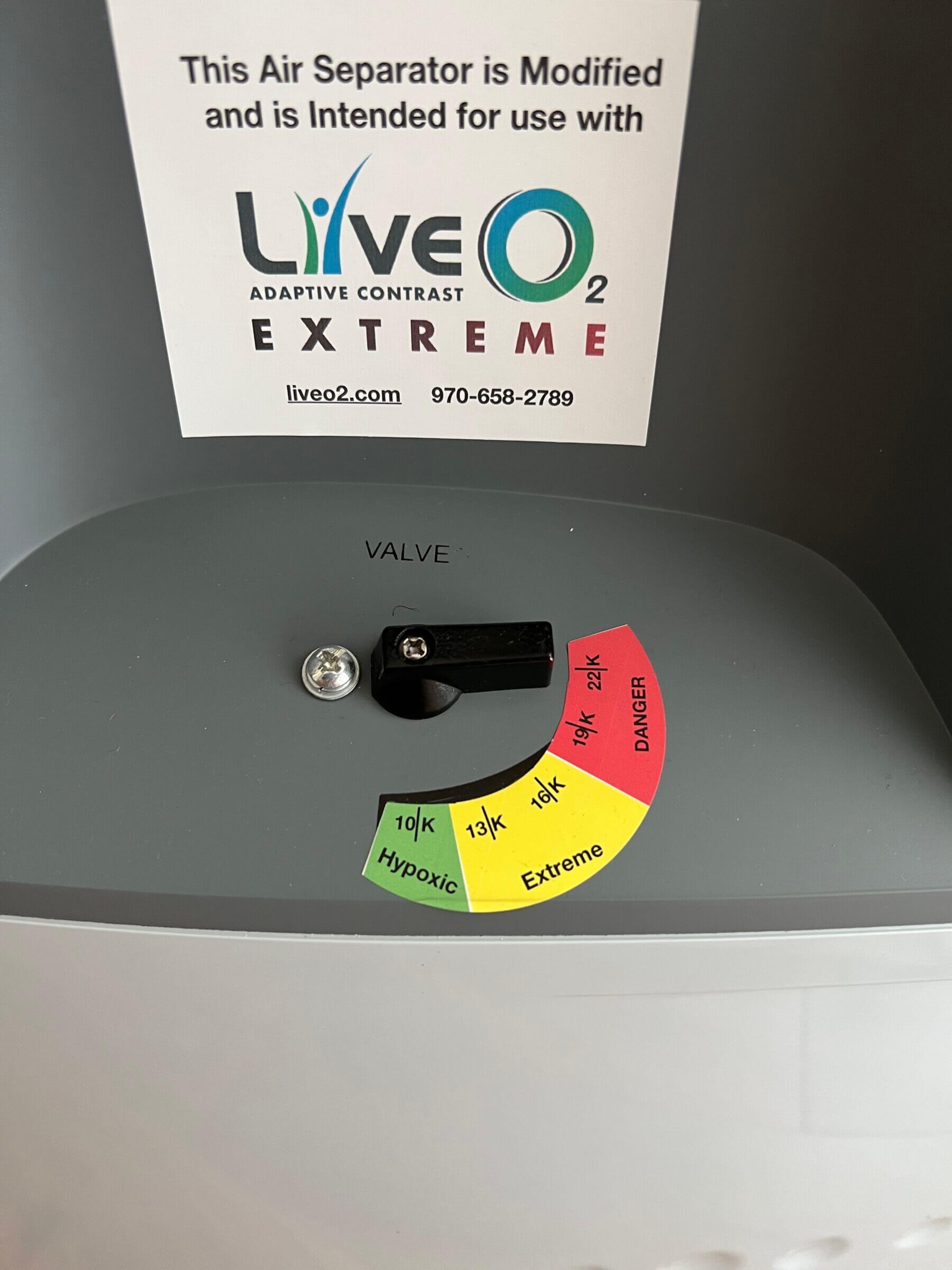
LiveO2 Extreme consists of two primary components, including an oxygen concentrator and an airbag (or reservoir) that’s split into two compartments.
The oxygen concentrator produces both hypoxic (low oxygen) and hyperpoxic (90% oxygen) air.
On the low end, you can use a valve to choose between several altitude settings that determine the air’s oxygen content, including:
- 10,000 feet (14% oxygen)
- 13,000 feet (13% oxygen)
- 16,000 feet (12% oxygen)
- 19,000 feet (11% oxygen)
- 22,000 feet (10% oxygen)
LiveO2 divided the altitude settings into three color-coded segments that they labeled as “hypoxic,” “extreme” and “danger.” While “danger” is certainly a bit dramatic — it’s not like inhaling 10% oxygen will make your head explode — there is a risk of becoming unconscious if you’re not used to breathing low oxygen for extended periods.
The concentrator is connected to the reservoir via two medical-grade silicone tubes that pump hypoxic and hyperoxic air into the respective chamber of the airbag.
The smaller of the two chambers contains low-oxygen air and the larger chamber holds air consisting of 90% oxygen. The reason why the larger (instead of the smaller) chamber contains 90% oxygen is because the oxygen concentrator can produce enough hypoxic airflow so you won’t run out. But generating air that contains 90% oxygen takes more time, and without a large enough reservoir, you’d quickly run out of hyperoxic air during longer workouts.
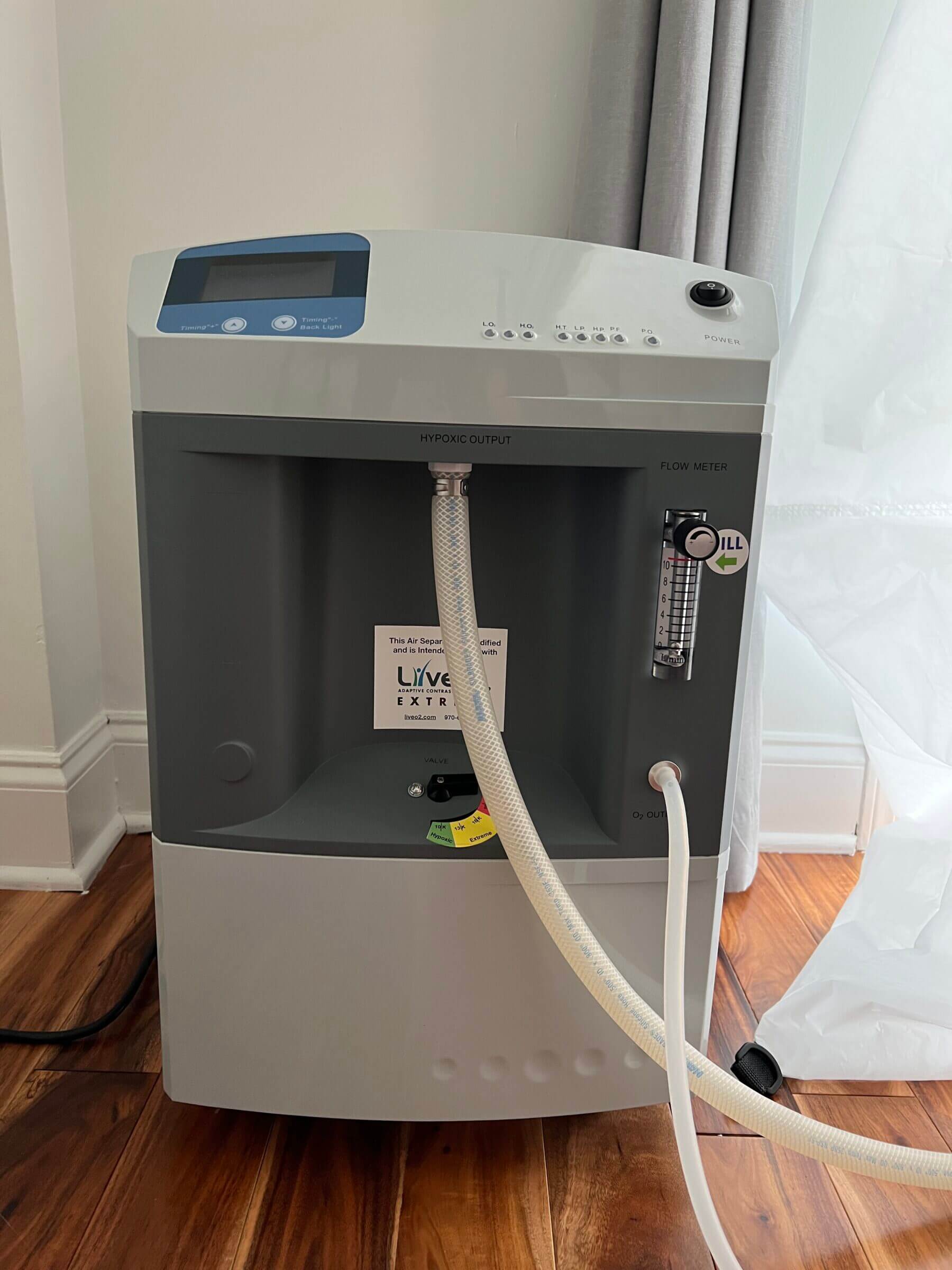
In addition to the valves that connect the tubes coming from the oxygen concentrator, the reservoir also has a flexible tube that allows air from either chamber of the airbag to flow into the attached mask. A valve attached to the front of the mask redirects exhaled air out of the mask and into the room so it doesn’t get pushed back into the tubing.
Last but not least, there is a mechanical remote control you can use to switch back and forth between low and high oxygen. Technically, the lever on the remote is attached to a wire that opens and closes a valve on the side of the reservoir to pull either air from the lower (hypoxic) or upper chamber (hyperoxic).
Setting up the entire system took me less than 15 minutes. The only challenge was finding space to hang the reservoir, which is about eight feet tall, five feet wide and two and a half feet deep.
I should mention that LiveO2 included a frame kit, consisting of two tripods and a horizontal bar, to hang the reservoir. However, I decided to use a curtain rod instead, to reduce the equipment’s required floor space. To attach the reservoir to the curtain rod, I used some heavy-duty clamps that I had in my photography bag.
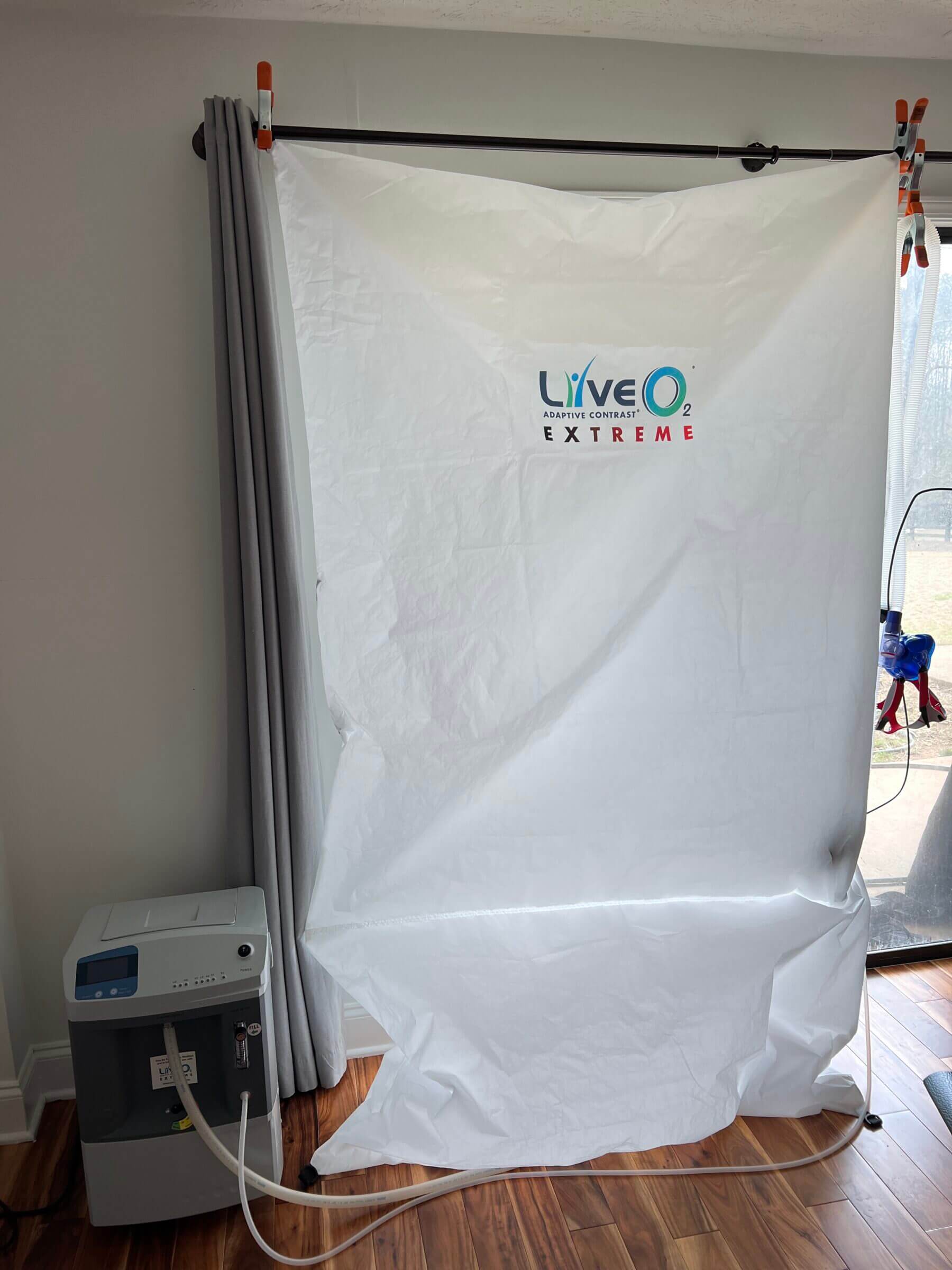

If you don’t have a curtain rod to hang the reservoir and don’t want to use the optional frame kit, you can also attach the reservoir to your ceiling using the loops that are attached to each corner of the airbag. Note that it’s perfectly fine for the lower chamber of the reservoir to touch or lie on the floor.
Last but not least (and to make it as convenient as possible for me to switch back and forth between low and high oxygen), I used the included 3M Velcro tape to attach the mechanical remote to the metal housing that holds the screen of my CAROL bike.
As far as the mask is concerned, LiveO2 offers several different options and straps to keep the mask securely attached to your face.
I’ve been using the Premium Mask Kit because it offers an excellent fit and it’s super easy to adjust. The latter was important for me because I share the bike and the oxygen training system with my wife, and we need to be able to quickly adjust the mask when changing riders.
LiveO2 Training Protocols (And How I Use the System)

LiveO2 offers several different training protocols on its webpage that you can use based on your individual goals and requirements, including:
- Whole body flush to help your body with flushing metabolic waste out of your bloodstream and lymph system (detoxify).
- Immune system support.
- Improve recovery after a respiratory infection.
- Anti-aging.
- Altitude acclimation and conditioning.
- Improving blood flow to the brain after injury or to boost your mental capacity.
- Treating chronic fatigue and reducing stressors associated with substance withdrawal.
If you don’t want to dig through the details of the various use cases, below are some guiding principles that I’ve used to design my own training protocols:
- You should be able to physically exert yourself (i.e., get your heart rate up) to obtain the maximum benefits in the shortest amount of time.
- If recovery, increasing blood flow and reducing inflammation are your primary goals, then frequently switching back and forth between low oxygen and high oxygen is beneficial.
- If your goal is improving athletic performance or preparing for high-altitude conditions, then staying on low oxygen for as long as possible is an excellent strategy.
I haven’t been following any of the prescribed protocols from LiveO2’s webpage because I wanted to see how I could seamlessly integrate the system into my existing training regimen using CAROL — the reduced-exertion high-intensity interval training (REHIT) bike that I’ve been using to complement my CrossFit workouts.
Here are the protocols I’ve been using since I started training with LiveO2 Extreme in October of 2021.
CAROL Intense Ride (REHIT)
CAROL’s hallmark REHIT protocol consists of a two-minute warm-up, a 20-second supra-maximal sprint, a three-minute recovery, another 20-second sprint and a three-minute cooldown.
I’ve been conducting this super-intense workout while breathing low-oxygen air (10%) for the warmup and the sprints, but I would switch to high oxygen for 30 seconds after each sprint and during the cooldown.
CAROL Fatburn 30/60
CAROL’s fat-burn protocols consist of a two-minute warmup, 30 or 60 eight-second sprints followed by 12 seconds of recovery (Tabata style), and a three-minute cool-down for a total of 15 to 25 minutes respectively.
For this workout, I’d stay on low oxygen for the entire ride except for the cooldown, during which I’d switch to high oxygen.
28-Minute Free Ride
My favorite recovery-day protocol consists of a 25-minute ride on low oxygen at moderate intensity (~140 to 150 bpm heart rate), followed by three minutes of cooldown on high oxygen.
When I first started using LiveO2 Extreme, I switched back and forth between low and high oxygen several times during those rides. But now that I no longer feel the “hunger” for oxygen, I usually just stay on low oxygen until the last two or three minutes of the ride.
How My Cardiorespiratory System Has Improved
I started using LiveO2 Extreme in mid-October 2021, and I got my first blood panel done about two weeks later.
Despite the relatively short time I had been training under low oxygen conditions, I saw noticeable changes in some of my blood markers, including my red blood cell count (RBC), hemoglobin and hematocrit (as you can see in the table below).
| June 2021 | November 2021 | February 2022 | |
|---|---|---|---|
| Red blood cell count | 4.73 | 5.88 | Coming soon |
| Hematocrit | 42.4 | 52.6 | Coming soon |
| Hemoglobin | 14.2 | 17.1 | Coming soon |
I should note that I gave a pint of blood in early December 2021 (which caused a temporary reduction in blood volume and likely lowered my hematocrit), and I also took a break from altitude training in December. But I resumed my exercise regimen in early January and I’m scheduled to get another blood panel in mid-February. So I’m looking forward to seeing how my blood markers have changed in the last six weeks.
Besides the changes in the above-mentioned blood markers, I’ve also noticed a significant change in how well I perform under low-oxygen conditions. For example, when I first started using the device I had to switch back to high oxygen intermittently even during moderate-intensity rides. But now, I can maintain a heart rate of 150-160 bpm while breathing 10% oxygen for extended periods and without having to switch to high oxygen.
I’ve also noticed an improvement in lactate threshold. In other words, I can push high-intensity workouts (i.e., CrossFit) longer before I start to decline.
Additionally, I’ve noticed an improvement in respiratory capacity in the sense of how much I can slow down my breathing rate. When I take cold plunges in 39-degree cold water, my respiratory rate used to increase due to my body’s shock response and the increased oxygen demands. These days, I can slow my breathing way down to just over two breaths per minute while being exposed to freezing-cold temperatures.
Last but not least, I managed to kick a relatively persistent head cold that I caught during my “training break.” After two weeks of suffering from congested sinuses, and with no end in sight, I decided to spend 30 minutes every day (for three days) on my bike breathing low oxygen, followed by two or three minutes of high oxygen. After three days, the cold was gone and my sinuses weren’t congested anymore.
I admit that the example above doesn’t constitute more than anecdotal evidence, but considering what I’ve learned about how intermittent hypoxic training can upregulate the immune system, I like to think that LiveO2 helped get me over the hump.
Pricing
The LiveO2 Extreme system I have — which includes the frame kit to hang the reservoir — currently costs $7,075.
I know that’s a lot of money and a significant entry barrier for many people. Frankly, if you’re a metabolically healthy individual who doesn’t rely on athletic performance to pay the bills, and you have no aspirations of climbing Mount Everest, it might not be worth the investment.
However, if you fall into any of the following categories, you may want to consider LiveO2 as an investment in your career, health and well-being:
- Professional athletes who want to improve their performance and speed up their recovery after workouts, competitions or injuries.
- Mountain climbers who want to better perform at altitude and reduce their risk of developing altitude sickness.
- Patients with brain injuries (e.g., strokes) or mental disorders (such as Alzheimer’s disease) who want to increase oxygenated blood flow to their brains.
- People with addictions who want to lessen the withdrawal stress after substance abuse.
- Biohackers who want to push the limits of their mental and physical performance.
- Anyone who has the means and budget and who wants to slow down aging and ensure peak cognitive and physical performance.
Accessories (Masks)
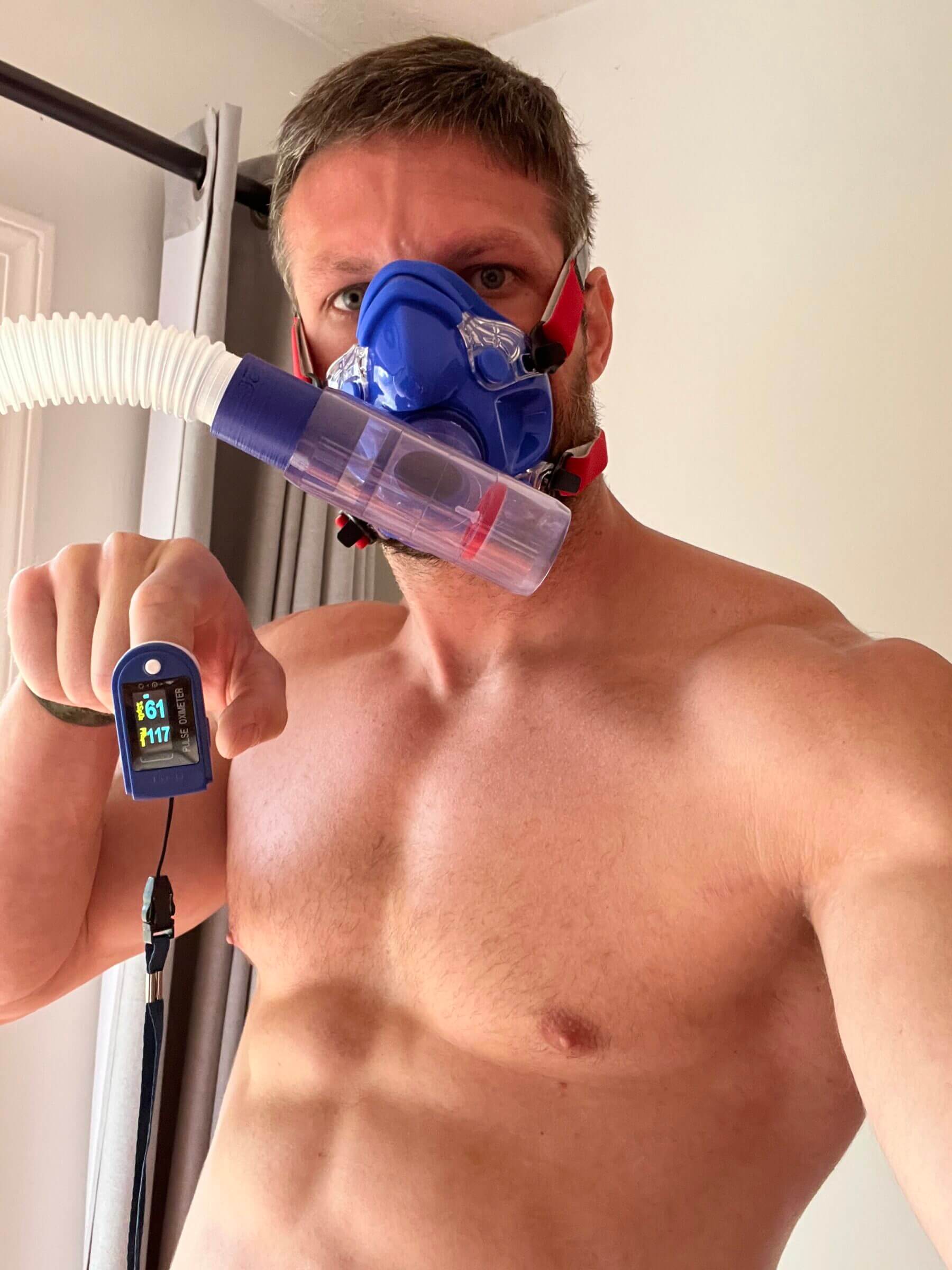
Note that LiveO2 offers several different types of mask kits (including a mask and straps to secure the mask to your face).
Depending on what system you choose, you either get the Standard or the Premium mask kit free of charge or for an additional fee. The LiveO2 Extreme system I have includes the premium mask free of charge, so you don’t have to worry about spending extra money.
But even if you decide to purchase the Standard system, I highly recommend the premium mask because it offers a better fit with a tighter seal around your face, and it lasts for up to three years compared to the six to 12 month service life of the standard mask. Plus, you can throw it in the dishwasher instead of having to clean it by hand.
Maintenance
Maintaining your LiveO2 system is fairly straightforward and includes washing your mask on a regular basis. If you have the standard mask, wash it with warm soapy water. If you have the premium mask, you can stick it in the dishwasher or wash it by hand.
Don’t use any harsh chemicals or ozone to clean the masks as it might destroy the silicone or increase the risk of you inhaling stuff you don’t want to get into your lungs (i.e., ozone).
Beyond that, I open the zippers of the two compartments of the reservoir from time to time to let them deflate completely. That’s useful for preventing the air inside from getting stale, especially if you haven’t used the system in a few days.
Side-By-Side Comparison of LiveO2 Systems

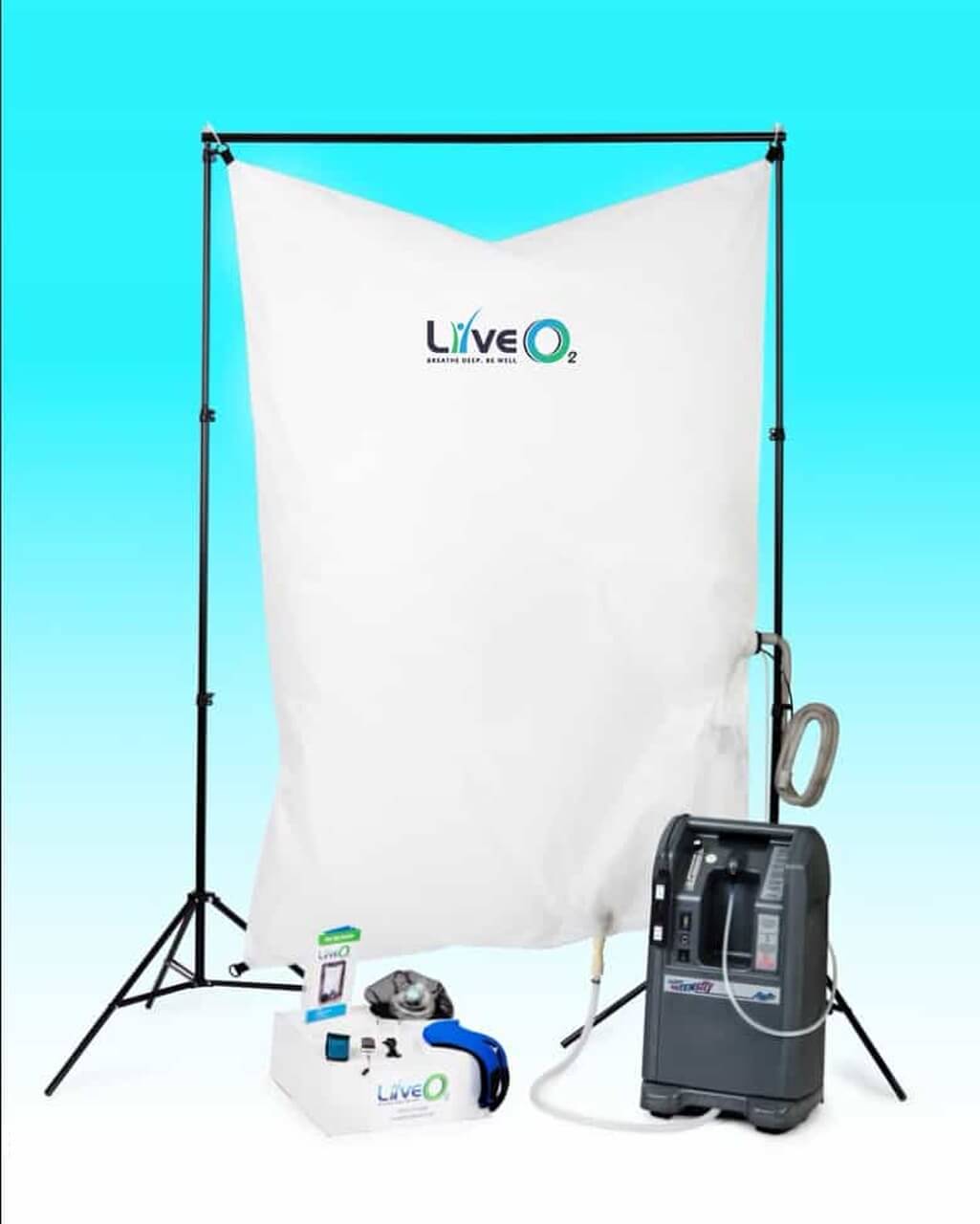
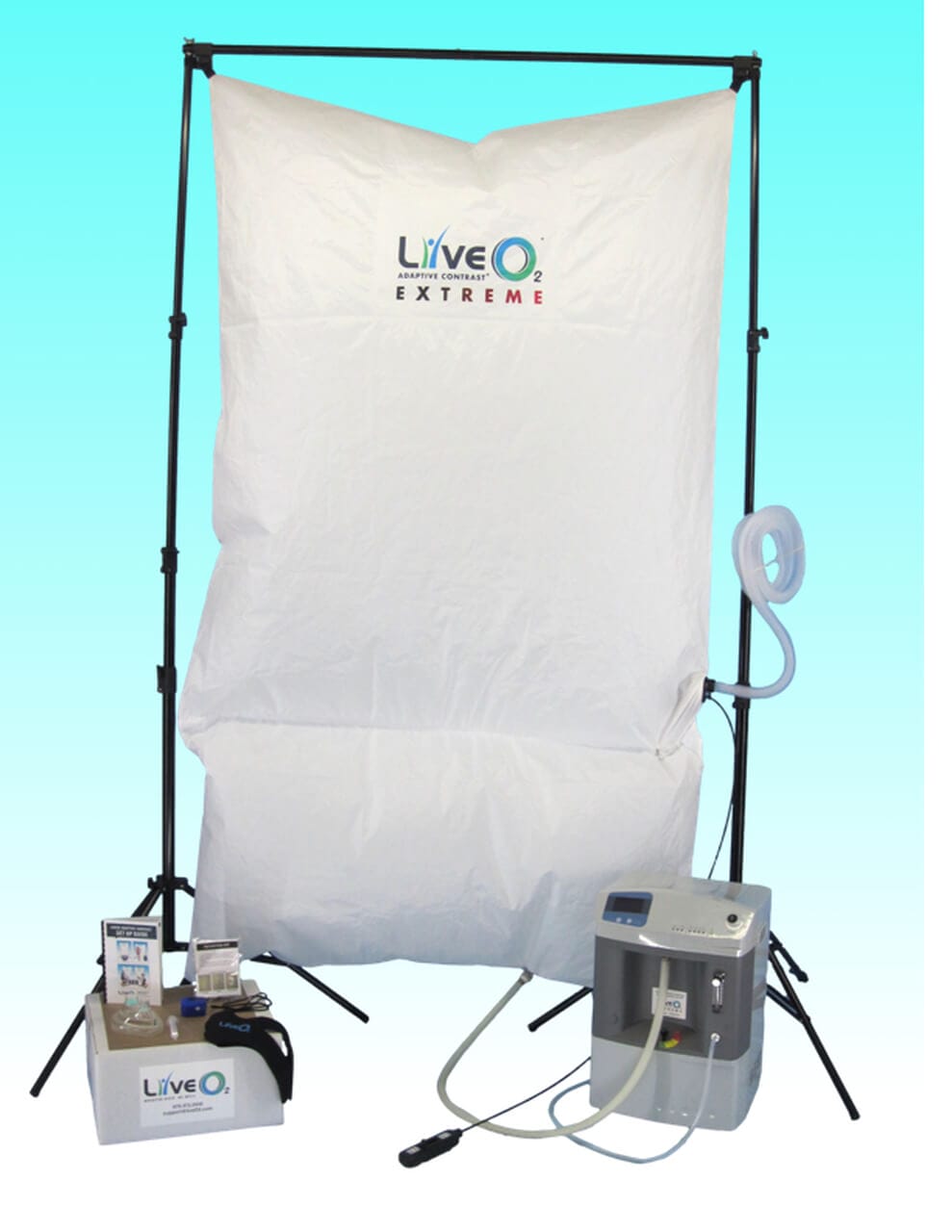
LiveO2 offers several different systems, and I hope the side-by-side comparison in this section will help you identify the one that’s best suited for you and your requirements.
LiveO2 Standard vs. LiveO2 Adaptive Contrast
| Standard | Adaptive Contrast | |
| Anaerobic training | ✘ | ★★★ |
| Aerobic training | ★ | ★★★ |
| Tissue penetration | ★★ | ★★★ |
| Circulating volume | Restricted flow | Maximum flow |
| Workout length | < 15 minutes | Unlimited |
| Hypoxic training | ✘ | ✓ |
| Use cases | Improved sleep, mild neurological improvement, respiratory recovery, immune system boost. | Improved sleep, neurological improvement, respiratory recovery, immune system boost, altitude conditioning, athletic performance, chronic fatigue and withdrawal stress. |
The Standard system is best used for traditional oxygen therapy or exercise with oxygen therapy (EWOT). The former involves the sedentary inhalation of high-oxygen air to help patients with certain medical conditions (e.g., respiratory infections and COPD) who require supplemental oxygen but who are unable to exercise.
While oxygen therapy can increase a person’s oxygen saturation — especially in the presence of medical conditions — its benefits are limited. To further improve oxygenated blood flow and tissue oxygenation, you need to ramp up your blood flow by increasing your heart rate. One of the best ways to do that is via exercise.
That’s why exercise with oxygen therapy (EWOT) is more effective in improving sleep, cognition, boosting the immune system and helping recover quicker from respiratory infections.
So if oxygen therapy or EWOT are your goals, then the LiveO2 Standard system is an excellent choice.
On the other hand, to obtain the maximum benefits that intermittent hypoxic training has to offer, you need to create a significant oxygen deficit and you can only do that by breathing hypoxic air. That’s why LiveO2 created the Adaptive Contrast system.
It enables you to switch back and forth between hypoxic (low oxygen) and hyperoxic (90% oxygen), creating negative pressure that makes your heart pump oxygen-rich blood with an increased force into even the smallest capillaries while making your cells soak up the oxygen-rich blood like a sponge.
So if your goals are noticeable improvements in cognition, athletic performance, altitude conditioning, and/or alcohol withdrawal stress, as well as boosting your immune system and slowing down aging, you need the Adaptive Contrast system.
Besides the Standard vs. Adaptive Contrast argument, there are variations of each system type that offer different fill rates (expressed in liters per minute of LPM). The fill rate determines how long the oxygen concentrator takes to fill the airbag before you can start using the system.
The table below shows the different fill rates and time it takes to fill the reservoir.
| Fill Rate | Fill Time | |
| Standard 5 LPM | 5 LPM | 2 hours |
| Standard 10 LPM | 10 LPM | 1 hour |
| Adaptive Contrast 10 LPM | 10 LPM | 50 minutes |
| Adaptive Contrast 20 LPM | 20 LPM | 25 minutes |
Note that the Adaptive Contrast systems fill the reservoir a little quicker than the Standard systems of equal fill rate because the oxygen concentrator produces hypoxic and hyperoxic air at the same time and fills the two chambers of the airbag in parallel.
LiveO2 Adaptive Contrast vs. LiveO2 Extreme
The third decision point to consider is whether or not to get the Extreme version of LiveO2 Adaptive Contrast.
The “Extreme” tag refers to the system’s ability to produce hypoxic air with even lower oxygen levels than the regular Adaptive Contrast system.
| Altitude (Oxygen) | Adaptive Contrast | Extreme |
|---|---|---|
| 10k (14%) | ✓ | ✓ |
| 13k (13%) | ✘ | ✓ |
| 16k (12%) | ✘ | ✓ |
| 19k (11%) | ✘ | ✓ |
| 22k (10%) | ✘ | ✓ |
As you can see in the table above, the regular Adaptive Contrast system is great for getting your feet wet with intermittent hypoxic training and it offers most of the benefits discussed in this article, including improved athletic performance, cognition, recovery after respiratory infections and sleep, and a boosted immune system. It also helps with the stress associated with alcohol withdrawal, to reduce the symptoms of chronic fatigue and to help acclimate to high altitude conditions.
However, if you’re planning on climbing Mount Everest or if you’re an elite athlete who wants to push the limits of physical performance, you should consider the Extreme system because it offers much lower oxygen settings than the regular Adaptive Contrast system.
In other words, the Adaptive Contrast Extreme enables you to simulate training at altitude conditions you would experience at 22,000 feet. For reference, the North Base Camp of Mount Everest is just above 18,000 feet. I’ve been training almost exclusively at 22,000 feet and I’m confident that I’d be able to make it to Base Camp of Mount Everest — at least from a respiratory perspective.
To make the LiveO2 lineup even more complicated, you can also choose between a regular LiveO2 Adaptive Contrast system and one with an extra-large high-altitude chamber. The large high-altitude chamber facilitates high-performance protocols. Although quite rare, an athlete doing high-performance protocols could “over-breathe” the smaller high-altitude chamber. The larger high-altitude chamber (as found on the LiveO2 Extreme) guarantees that can’t happen.
Additionally, you can get a dual user system that includes two oxygen concentrators. The latter is useful in a gym setting or doctor’s office to accommodate multiple users without requiring separate systems.
How Does LiveO2 Compare to Other Forms of Oxygen Training?
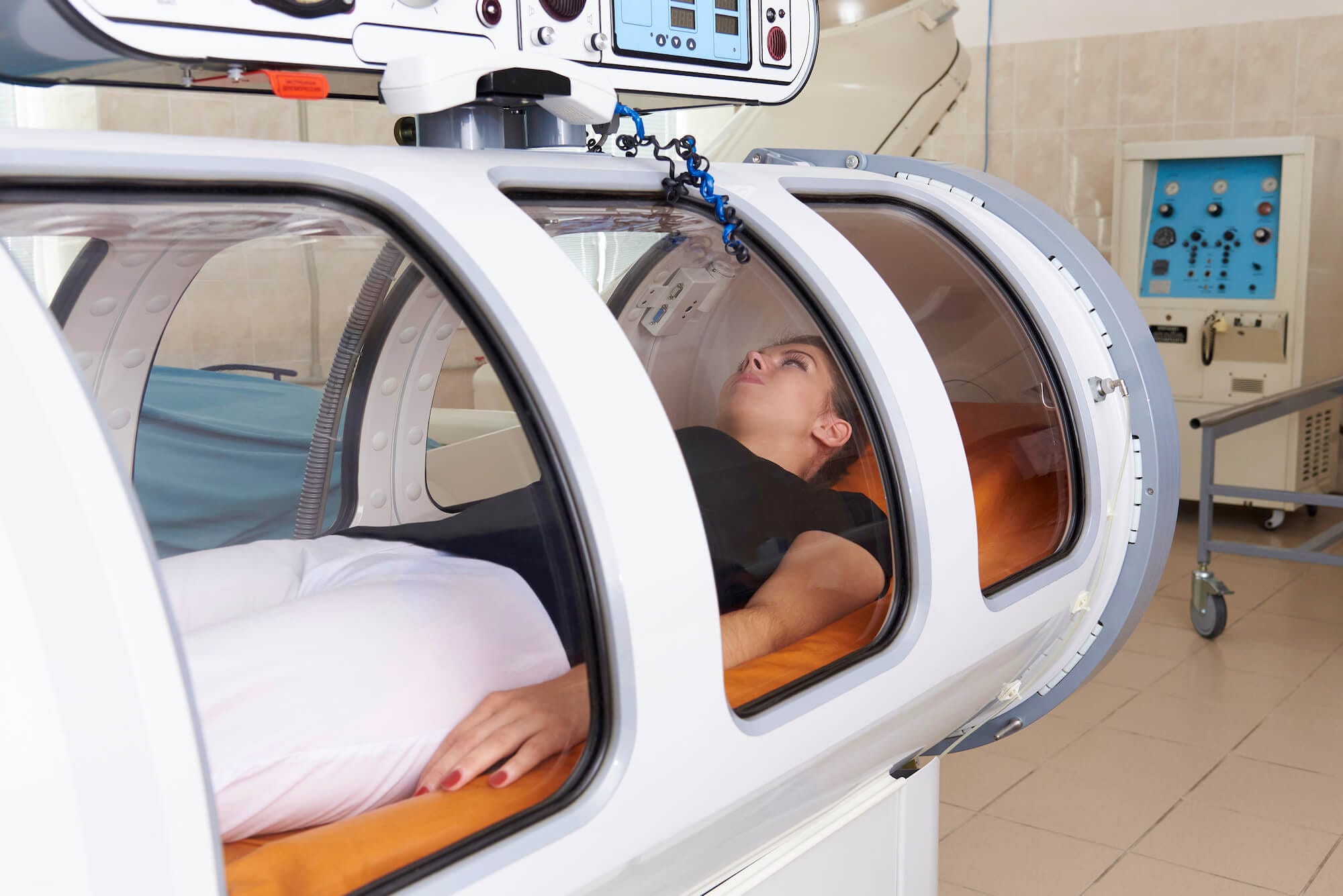
The main difference between training with LiveO2 and other forms of oxygen training, including EWOT or hyperbaric oxygen therapy (HBOT), is how well it can facilitate oxygen delivery to blood plasma and tissues.
Just inhaling pure oxygen won’t significantly increase oxygen saturation in your tissue unless you create an oxygen deficit beforehand. That’s exactly what the Adaptive Contrast technology of LiveO2 does.
Additionally, training with LiveO2 doesn’t have any of the potential side effects that hyperbaric chambers have, including oxygen poisoning, lung damage and others.
How to Get the Most Benefits Out of LiveO2
To get the most benefits out of the LiveO2 system, you want to create an oxygen deficit by moderately increasing your heart rate through exercise while inhaling hypoxic air that contains 14% oxygen or less. Doing so will trigger a buildup of “negative pressure” as your tissue is demanding more oxygen than what’s available.
Switching to hyperoxic air (90% oxygen) after having inhaled hypoxic air for several minutes causes your tissue to soak up the hyper-saturated blood like a sponge while the heart pushes oxygen-rich red blood cells into the tiniest of capillaries.
The interesting thing with capillaries is that many of them are so narrow that red blood cells can’t fit through them. As a result, the surrounding tissue only gets supplied with blood plasma, not oxygen. However, hypoxia causes systemic blood vessels (including those capillaries) to dilate, giving oxygen-rich blood cells enough room to reach that tissue.
Creating that dramatic contrast between low-oxygen air and high-oxygen air during periods of increased heart rate is what makes LiveO2 so effective in comparison to other forms of oxygen training or oxygen therapy.
Frequently Asked Questions
Depending on the type of LiveO2 system, it takes between 20 minutes (Adaptive Contrast 20 LPM) and two hours (Standard 5 LPM).
Yes, you can, but depending on who you want to share the system with, you might want to consider allowing everyone to use their own mask. My wife and I use the same mask because the accidental exchange of saliva (which can accumulate inside of the mask) isn’t a concern for us.
The floor space required for a single-user LiveO2 system plus exercise equipment (e.g., a stationary bike) is approximately 30 square feet. You also need sufficient clearance to hang the air bag, so an eight-foot ceiling (or higher) is advantageous.
Yes, intermittent hypoxic training (IHT) with LiveO2 is an excellent way to decrease chronic inflammation by increasing oxygenated blood flow and nutrient delivery to inflamed tissues, including the brain.
Just keep in mind that acute inflammation is an important mechanism for the body to deal with tissue damage and to support the immune system. Inflammation is an issue when it becomes chronic. You can learn more about the benefits of IHT in this article.
Yes, in addition to decreasing inflammation, increasing oxygenated blood flow promotes tissue repair and wound healing. You can learn more about the benefits of IHT in this article.
Intermittent hypoxia causes an innate immune response by releasing pro-inflammatory cytokines and white blood cells (both are part of the body’s natural immune response) that can help the body fight off infections.
Short-term hypoxia causes the dilation of system blood vessels, an increase in heart rate and blood flow. Intermittent hypoxic training (IHT) allows your body to adapt by creating more oxygen-carrying red blood cells and by forming new blood vessels, a process called angiogenesis.
Check out this article for a complete list of benefits associated with IHT.
I use a simple pulse oximeter that I clip to my finger during workouts to ensure I have a sufficient amount of oxygen in my bloodstream.
At least, that’s what I did in the beginning to avoid desaturating too much and passing out. These days, I don’t use it because I can feel where my blood oxygen saturation roughly is. For reference, during moderate-intensity rides, I desaturate to the high 70s but during intense REHIT sprints, I drop to the low 50s.
LiveO2 Extreme Review: Wrap-Up

I have to admit that I’ve become addicted to exercising under low oxygen conditions. That’s because I can feel the effects of both low and high oxygen in my brain. During extended workouts under low-oxygen conditions, my brain releases hormones, such as cortisol and oxytocin (the feel-good hormone) that makes me want to push even harder.
But as soon as I switch to high oxygen, I can feel the blood rushing through my entire body and, in particular, the brain. I get goosebumps and a high that I’ve not experienced before — at least not in such intensity.
But aside from how training with LiveO2 makes me feel when exercising, I’ve seen enough scientific research on the benefits that I want to continue using the system on a regular basis.
I’ve already seen dramatic changes in blood markers and athletic performance and every time I exercise with LiveO2 in the evening, I get more deep and REM sleep (as shown by my WHOOP Strap) and I have the most vivid dreams.
If you’re not quite ready to invest in LiveO2 but want to experience some of the benefits of oxygen training, I recommend starting by practicing nose breathing, mouth taping and empty-lung breath holds.

Michael is a healthy living enthusiast and CrossFit athlete whose goal is to help people achieve optimal health by bridging the gap between ancestral living and the demands of modern society.
Medical Disclaimer
The information shared on this blog is for educational purposes only, is not a substitute for the advice of medical doctors or registered dieticians (which we are not) and should not be used to prevent, diagnose, or treat any condition. Consult with a physician before starting a fitness regimen, adding supplements to your diet, or making other changes that may affect your medications, treatment plan or overall health. MichaelKummer.com and its owner MK Media Group, LLC are not liable for how you use and implement the information shared here, which is based on the opinions of the authors formed after engaging in personal use and research. We recommend products, services, or programs and are sometimes compensated for doing so as affiliates. Please read our Terms and Conditions for further information, including our privacy policy.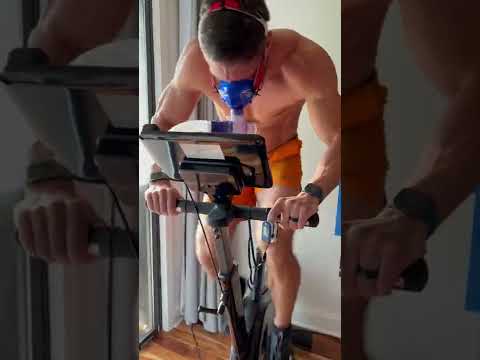
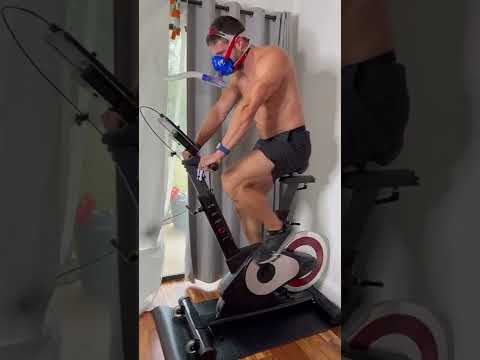
Greetings I have the live 02 and I will need someone to help me how to use it
Hey Robert,
have you reached out to LiveO2? They usually assign a consultant to your account who can help you out.
a friend had a spinal cord injury almost three years ago. He is able to walk now [very slowly and with great difficulty], but it seems to have reached its limit in repairing the nerve damage. He does not believe that he will get any better . He was told that if you havnt reached full healing within two years, you will not get any better. Ive seen some remarkable healing avenues using oxygen [but mostly with brain injuries]..I am wondering if the Liv02 system can give him any improvement , thank you
Great question! I don’t know anyone who has used LiveO2 with spinal cord injuries but I suspect pushing oxygenated blood into the injured areas can only help. I’d give it a try if I was in your friend’s position.
Live O2 Extreme is dumb. If you want to go hypoxic, save your money and just hold your breath for 5-10 seconds at a time during EWOT. A lot more affordable options out there.
Seriously? 🤦🏻♂️